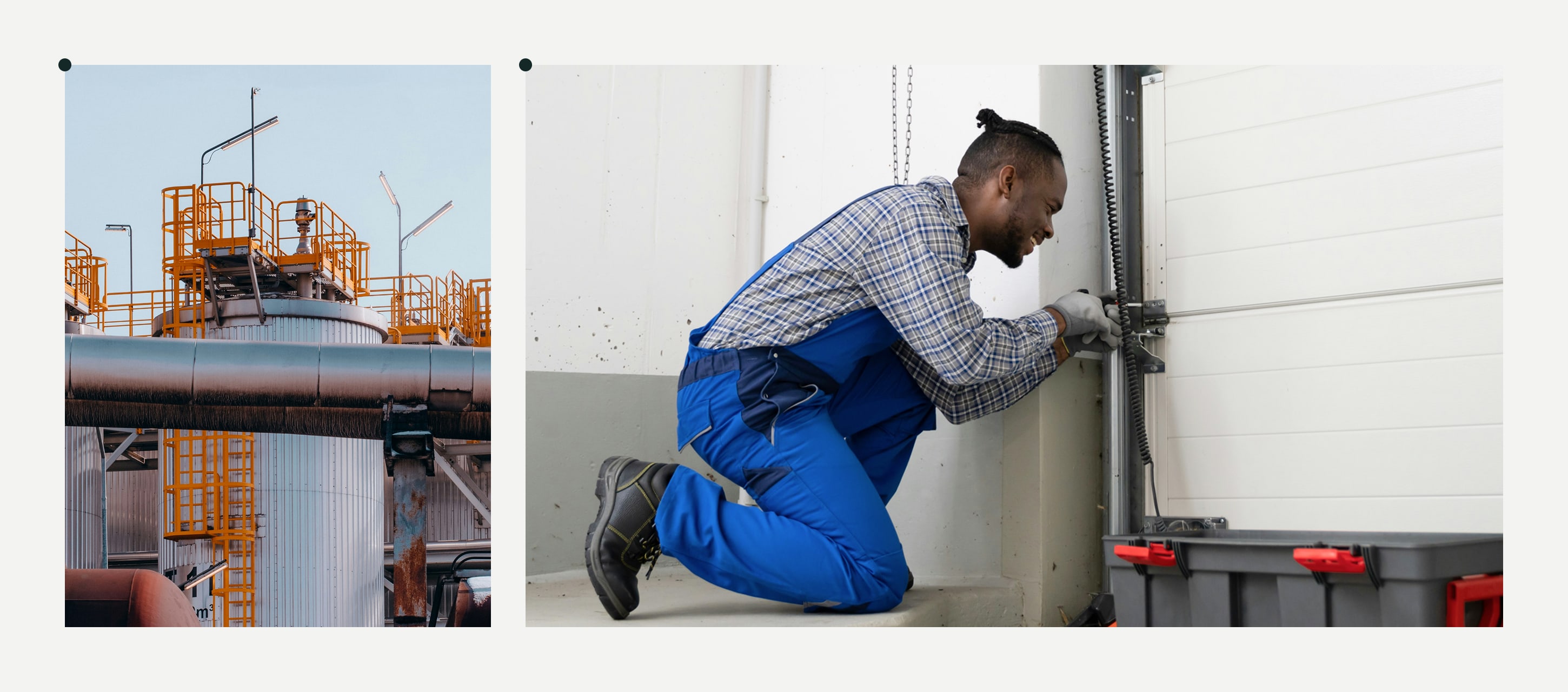Running a wind farm means managing multiple processes, from maintenance to safety.
Every process connects to the next. When operations run smoothly, turbines generate power, teams stay efficient, and no one has to explain a six-figure equipment failure. When they don’t? Welcome to downtime, lost revenue, and a compliance nightmare.
Let’s break down the five key processes that actually keep wind farms running – and how technology can help.
Contents:
1. Maintenance
Wind turbines don’t just fail overnight. They fail when an inspection note gets lost, when a work order sits in limbo, when a tiny issue snowballs into a mechanical crisis.
There are three types of wind turbine maintenance:
- Preventive – Catch issues before they escalate.
- Predictive – Use data to see failures coming.
- Corrective – Scramble to fix what’s already broken.
The $500,000 Gearbox Failure That Didn’t Have to Happen
A technician spots an oil leak on Turbine #42. No big deal, right? They jot it down and move on. Three weeks later, the gearbox blows out. Why? Because this “minor” leak had been reported before, but with no centralized record, no one connected the dots.
Had they been using a proper maintenance system, the tech would have pulled up the service history, flagged the recurring issue, and scheduled the repair before it turned into a half-a-million-dollar headache.
How to Stop This From Happening to You
- Keep service history logs accessible in one place.
- Connect work orders, inspection reports, and condition monitoring data.
- Automate preventive maintenance schedules instead of relying on memory.
- Track parts replacements and component failures before they turn critical.
2. Safety Management
In wind energy, compliance is the law, but it’s also a logistical migraine. Certifications expire. Inspections get delayed. And let’s not even get started on offshore safety requirements.
But here’s the thing: turbine safety isn’t just about avoiding lawsuits. It’s about making sure maintenance actually happens without putting people at risk.
How to Keep Safety & Compliance From Becoming a Bottleneck
- Store all safety documents in one place (not buried in email chains).
- Track inspections automatically so nothing gets “forgotten.”
- Make compliance reporting idiot-proof—no more scrambling before audits.
- Connect safety records with maintenance data for real-time oversight.
- Automate permit approvals so technicians don’t waste hours waiting.
Because no one wants to explain to regulators why a turbine repair got held up because someone lost a piece of paper.
The Wind Energy ROI Guide
See how Fluix can help you simplify inspections and maintenance, cutting operational costs


3. Task Management
You know what’s worse than a turbine failure? The fact that it takes forever to get the right technician, the right part, and the right approval all in the same place at the same time.
When task management is a mess, so is everything else.
What a Typical Day Looks Like Without a Proper System
- Site Supervisor: “Turbine #98 is down. Why aren’t you on it?”
- Blade Technician: “I would, but I never got the inventory list.”
- Parts & Inventory Specialist: “Not my fault, I sent it.”
- Blade Technician: “Oh, wait… it got stuck in my inbox. No signal yesterday.”
And just like that, hours of downtime pile up.
What Task Management Should Actually Look Like
- Offline functionality so work doesn’t stop when Wi-Fi does.
- Automated workflows to assign tasks without a million emails.
- Real-time status updates so no one’s left guessing.
- Integration with inventory and maintenance systems so parts and people are where they need to be.
4. Training & Certification
By 2030, the European wind workforce alone will need to double. That means thousands of new technicians who need training, fast.
The problem? Rushing training creates safety risks. But delaying it slows down operations. And nothing grinds maintenance to a halt faster than a technician whose certification expired last week.
How to Keep Your Workforce Trained (Without Losing Your Mind)
- Track certifications in real time so expired credentials don’t hold up work.
- Automate renewal reminders because no one remembers that stuff.
- Provide mobile training access so techs can stay updated anywhere.
- Analyze skill gaps so the right people handle the right tasks.
You can’t fix a turbine if your techs aren’t trained to climb it. Keep training workflows as structured as your maintenance schedules.
5. Document Management
Wind farms generate huge amounts of data. Maintenance logs, compliance records, safety audits—you name it.
But none of it matters if your team can’t find the right information when they need it.
How a Proper Document Management System Keeps Operations Moving
- Centralized access so everyone works from the latest version.
- Mobile-friendly storage so techs don’t have to dig through PDFs on their phone.
- Automated approval routing so reports don’t sit in limbo.
- Compliance tracking so audits aren’t a nightmare.
- Pre-filled digital forms to cut down on manual entry errors.
Fluix: The Tech That Keeps Wind Farms Running
Fluix automates all the above and other essential wind farm processes, leading to results that actually matter:
- Siemens Gamesa saves 2,000+ hours annually on maintenance workflows.
- RWE Renewables completes maintenance 45% faster with task automation.
- Ziton cut documentation time by 72%, making compliance way less painful.
Look, you already know wind energy is complex. If you’re ready to stop putting out fires and start running your wind farm like a well-oiled machine, we should talk.





